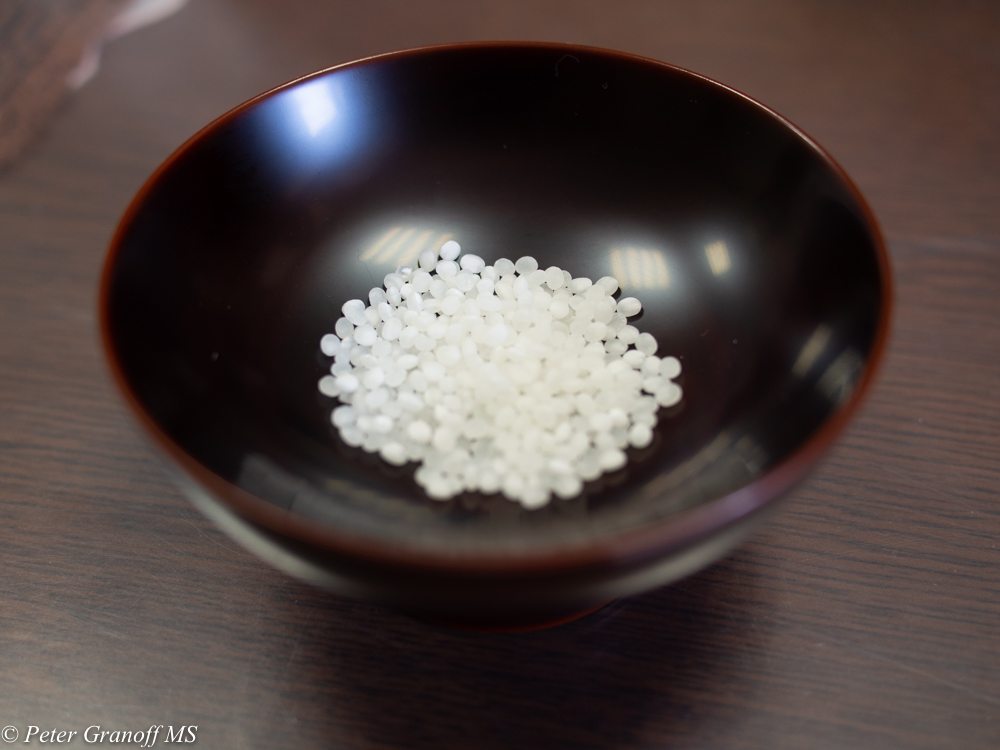The Fine Sake Conundrum
 A few years ago I visited thirteen Sake breweries scattered around Japan with a small group of fellow Master Sommeliers. The trip was skillfully organized by Toshio Ueno, one of the best ambassadors for Sake anywhere. It was also the dead of winter with more than 8 feet of snow on the ground in the colder areas of the country! Equally important and lasting, however, was the window provided into the culture of Sake, its traditions and its contemporary challenges, challenges which I think of as the Sake conundrum. More . . .
A few years ago I visited thirteen Sake breweries scattered around Japan with a small group of fellow Master Sommeliers. The trip was skillfully organized by Toshio Ueno, one of the best ambassadors for Sake anywhere. It was also the dead of winter with more than 8 feet of snow on the ground in the colder areas of the country! Equally important and lasting, however, was the window provided into the culture of Sake, its traditions and its contemporary challenges, challenges which I think of as the Sake conundrum. More . . .
We are fortunate, here in the city by the bay, where fine Sake has been embraced by top wine merchants and innovative restaurants alike. This has taken Sake well outside the confines of sushi bars and Japanese grocers, but a wider embrace remains elusive.
Some of this is cultural, and that is at least in part the source of the conundrum. For example, the American wine press has often celebrated power and intensity above other characteristics in wine, and the tasting settings in which wines are evaluated for the purposes of scores and reviews often result, whether intentional or not, in advantage to wines that are more assertive or dramatic. As wine merchants, we evaluate hundreds of wines a month for potential inclusion in our offering, and we frequently return to wines that were overshadowed by more boisterous selections to ensure we have not overlooked a subtle beauty. To be blunt, it is a constant challenge.
In evaluating Sake, by contrast, Japanese connoisseurs usually celebrate delicacy and finesse, and the two approaches could not be more different. Just imagine an exquisitely proportioned bonsai tree next to a magnificent Sequoia. It stretches the analogy, I know, but it is no less appropriate. One aspect of Sake production, the Seimai-Buai, illustrates this perfectly. The Seimai-Buai of a finished Sake represents the percentage of the rice grain that remains after the milling step that prepares rice for Sake production. As the outer layers of bran and then starch kernel are polished away, one is left with the purest core from which to convert starch to fermentable sugars. As a general rule, the smaller the heart of the rice kernel that remains, the more delicacy, finesse, and aromatic complexity the finished Sake will have. These fine Sakes are as far away from a bombastic 100 point wine as they could be, and yet they are the epitome of a Sake brewer’s art.
Another aspect of the Sake conundrum manifests in the choice of how it is presented. The various regions (prefectures) of Japan that produce Sake are fiercely and justifiably proud of the artistry represented in their traditional service vessels, whether ceramic or wood. We feel, on the other hand, that a fine wine glass allows more of the aromatic complexity of fine Sake center stage, and so prefer to use traditional wine stemware. And the more delicate and complex the Sake, the more important the glass becomes to showing its nuance.
And the final conundrum (for the moment ;>), is the issue of packaging and marketing. Sake bottles are often quite stunning - literally works of art. Sake producers are very proud of their packaging choices. The US consumer is often lost, however, without an interpreter at hand to decipher the terminology used and poetic names in play. At virtually every Sake brewery we visited, at some point we were asked the same basic question: “How do I make my Sake more successful in the US market?” It was difficult to explain our response to this question without appearing disrespectful, which of course was the last thing we wanted. The answer, however, is for producers to work together to build the US market for Sake. Concern for specific brand success has to wait. I still believe that, but it is a hard message to deliver, and even harder to develop a coherent plan to accomplish the task.
Have we piqued your interest in Sake? Perhaps a few additional factoids will help. 1) Sake is not a wine. 2) Sake is brewed, but it is not a beer either. 3) Sake has been produced for approximately 1,700 years. 4) There are hundreds of Sake breweries in Japan, both large and small, and while young people in Japan sometimes see it as the old-fashioned drink of their elders, there is a renaissance underway of small craft Sake breweries that somewhat mirrors the craft beer movement in the US. 5) And for those of you with a more technical interest in how Sake is made, it is unique among alcohol beverages in that the essential conversion of starches to fermentable sugars takes place simultaneously as the fermentation of those sugars into alcohol. This is known as “multiple parallel fermentation,” and it is both steeped in tradition and a sophisticated process informed by modern science.
